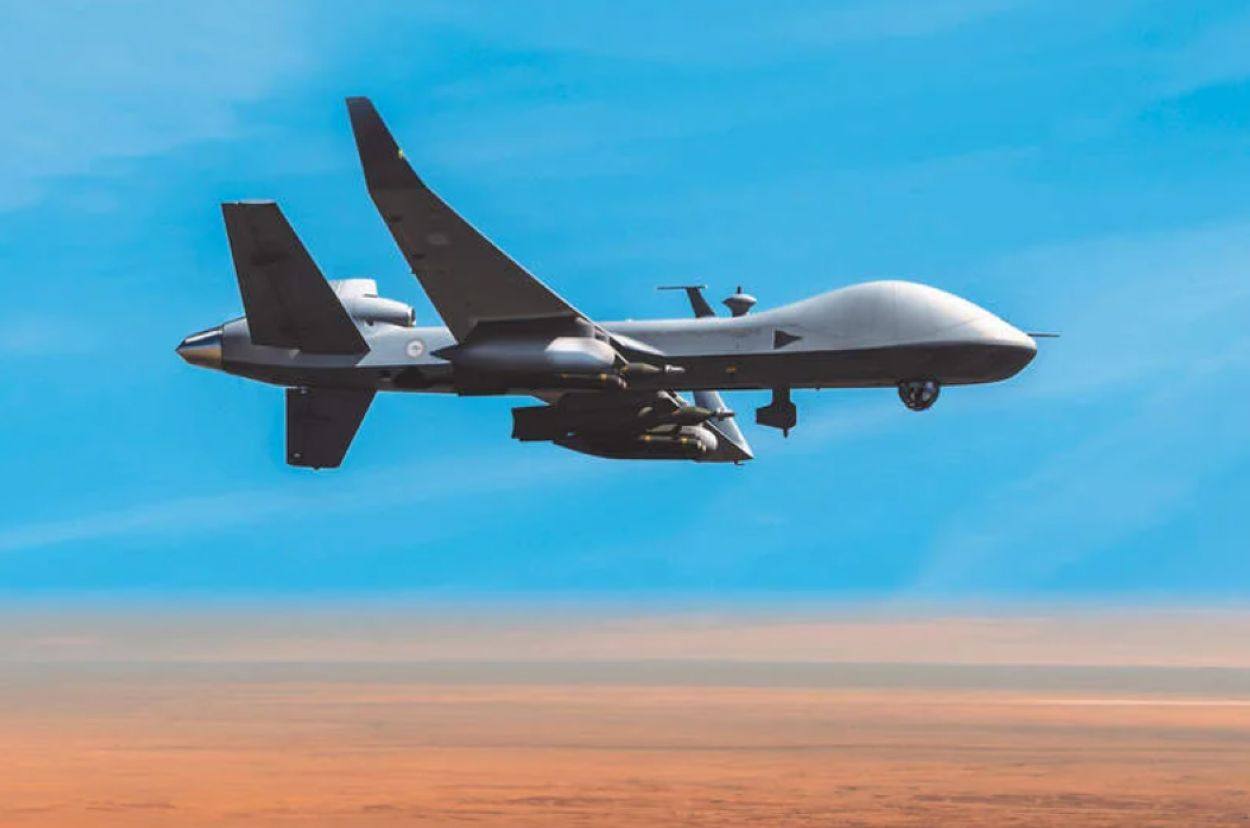Following the downing of the MQ-9 Reaper drone by a Russian Su-27 fighter over the Black Sea, officials from both countries have claimed diminished American airborne surveillance and reconnaissance capability in the region, as the latter’s aircraft and drones are being forced to fly further down south and far away from Ukraine’s coast.
This has impacted the accuracy and timeliness of electronic and optical intelligence on Russian ground and airborne assets that US aircraft gathered to help the Armed Forces of Ukraine (AFU).
On the morning of March 14, a Su-27 flew overhead the Reaper and dumped fuel on the unmanned aerial vehicle (UAV), causing it to lose control and forcing its operators to crash it into the sea.
The incident was recorded on the swiveling electro-optical system of the drone that was turned behind towards the push-propeller and showed the Su-27 coming from the rear. The incident triggered angry recriminations from Washington, calling it a “reckless interception.”
Russia has long pointed out how NATO and US aircraft like the RC-135 Rivet, RQ-4B Global Hawk drone, and the E-8 Joint STARS reconnaissance, surveillance, and electronic intelligence aircraft fly the area around Ukraine’s coast and the Black Sea to assist Kyiv in its military operations.
The Global Hawk was reportedly used in the October 2022 maritime drone strike on the Russian Navy’s Black Sea Fleet in Crimea’s Sevastopol.
Moscow uses this to bolster its larger political argument that it is fighting the West’s proxy war and not Ukraine itself and raises a question on Washington’s intentions.
Rerouted US Reconnaissance Flights, Compromises Intelligence Quality
On March 28, a report on RIA Novosti said the publication had analyzed data from open-source flight tracking website Flightradar24 and found that the US has moved its drone flights further away from the area surrounding the eastern Black Sea and Crimea.
Before that, on March 21, CNN quoted unnamed Biden administration officials about drone flights flying “new routes…to avoid being too provocative” and prevent an “incident that could potentially escalate into a direct conflict between US and Russian forces.”
CNN, too said a US RQ-4 Global Hawk remained in the southern and southwestern portions of the Black Sea at an altitude of approximately 52,000 feet.
Within two days of the drone’s downing, the Pentagon had begun “reconsidering (and) taking a good look at the overall costs and benefits of flying these missions” by comparing the “potential value of an intelligence versus the risk of escalation with Russia.” Military officials worried about a dip in the quality of “intelligence gathering” that “limiting such drone routes” might affect.
Another March 28 report on CNN quoted Pentagon officials about how the alternative of employing powerful spy satellites is limited regarding the time and proximity over a target region.
The new routes now make US drone flights fly 40 nautical miles from the Ukrainian coast rather than the 12 nautical miles generally recognized as a nation’s airspace limit. American officials, however, said they still had the “appetite” to return to routes closer to Russian-held territory and that their new routes were only “for the time being.”

Russia’s Objectives In Downing MQ-9 Reaper
So far, the impact on the American Intelligence-Surveillance-Reconnaissance (ISR) capability does not seem to have intensified Russian ground operations in the Donbas, as it would usually be expected to make the most of not being watched.
This means downing the drone had a more political and strategic objective than a military one. Russia is now willing to tackle US military assets, which had long qualified as legitimate targets, but was still spared for a year not to escalate things with Washington.
American officials were completely stunned by the incident and the manner in which the drone was downed & drowned.

While US strategists were just getting used to the idea that Russia would continue to resist sanctions and a proxy war, they did not expect Russia to target the US military now. That restraint was governed by an absolute reluctance to fight each other directly.
This does not mean that the Russian calculation has changed and that it sees kinetic military action on the West as the only solution to its strategic provocations. But neither does it mean it can indefinitely allow support to an adversary state. The MQ-9 Reaper incident had three attributes that made it a perfect target.
One, it was a small tactical platform. Two, it was an unmanned system. And lastly, it was taken down using a non-lethal and non-kinetic way of a fuel dump, rather than with an air-to-air missile (AAM) and from a Cold War-era fighter like the Su-27.
Nevertheless, the impact was strategic as it temporarily suspended US reconnaissance flights from the area. On the other hand, the Chinese weather balloon over the Carolinas was a non-military platform, was widely assessed to have just strayed off course, and was not even over a warzone.
But it was shot down by a highly advanced fighter like an F-22 Raptor with an AIM-9X Sidewinder AAM, making the contest lopsided and disproportionately high in the use of force.
Vladimir Konstantinov, the head of Crimea’s Parliament, told RIA Novosti that the impact on surveillance flights in the Black Sea also affects its ISR capability in the “Middle East and the Caucasus.”
“Since then, this thought has gnawed at them and haunted them. Odesa, which they have left, is now under blockade and cannot be used by them in the way they used to do around the world. They have lost a very serious strategic position,” Konstantinov said.
- The author can be reached at satamp@gmail.com
- Follow EurAsian Times on Google News




